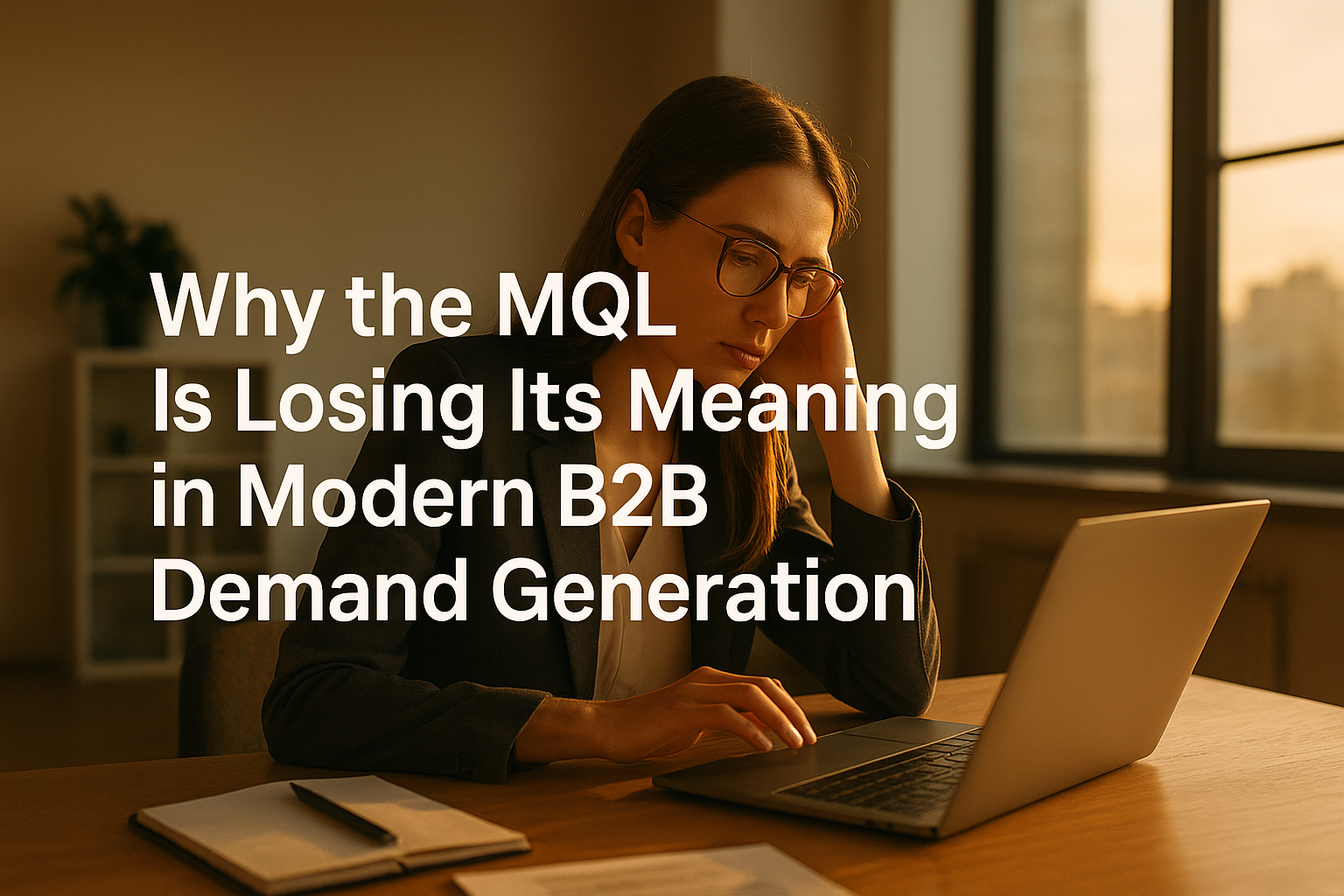The Science of the Warm Lead: How to Build a Demand Gen Engine That Converts Faster
Demand Generation Strategy
The MQL once defined marketing success — now it’s holding B2B teams back. Discover why demand gen leaders are shifting from lead volume to revenue-ready conversations and how Site Ascend helps you make the leap.
-
Demand Generation Strategy

Introduction
For years, the Marketing Qualified Lead (MQL) has been the north star metric for B2B marketing teams. It was simple, measurable, and fit neatly into the funnel. But in 2025, simplicity no longer equals success. With longer buying journeys, evolving buyer committees, and a flood of intent data, the MQL has become a lagging indicator rather than a signal of real opportunity.
Demand generation teams at technology companies are realizing a hard truth: volume doesn’t equal value. Marketing performance can no longer be measured by how many leads fill the CRM, but by how many turn into revenue-ready conversations.
What MQL Means for Demand Generation Marketers in 2025
Traditionally, an MQL was any prospect who engaged with marketing enough to indicate potential interest — maybe a whitepaper download, a webinar registration, or a few website visits.
But today’s B2B buyers don’t fit that mold. They do their research independently, engage across dozens of channels, and often bypass the “lead” stage entirely before talking to sales. As a result, the MQL model has become disconnected from how actual buyers buy.
For demand generation leaders, this shift means one thing: it’s time to rethink qualification. Engagement alone doesn’t make a lead valuable — conversation intent does.
Common Challenges Marketers Face
Even the most sophisticated marketing teams struggle when MQLs become the primary success metric. Some of the most common pain points include:
These challenges leave marketing teams defending their pipeline rather than driving it — a frustration that’s pushing many toward pay-for-performance demand generation models.



.png)



.png)
%201.png)


.png)
%201.png)


.png)








Solutions That Work
Modern demand gen teams are evolving beyond the MQL by focusing on qualified meetings, not qualified leads. Instead of relying on arbitrary engagement thresholds, they’re prioritizing conversations with decision-makers that align to business outcomes.
This is where Site Ascend helps teams modernize their funnel.
By paying only for meetings that occur — not for form fills or database entries — marketing teams can prove impact faster and align with revenue more directly.
Actionable Steps for Marketers
If your organization still measures success by MQLs, it’s time to recalibrate. Here’s how to start:
When marketers prioritize quality interactions over quantity of leads, the result is a more predictable, revenue-focused pipeline.
Comparison of Market Solutions
Some organizations try to solve the MQL gap by scaling in-house SDR teams or relying on volume-driven lead generation vendors. Both approaches tend to drive more data, not more opportunity.
A performance-based demand generation partner offers a more strategic alternative. By focusing on meetings that actually occur and U.S.-based outreach targeting director-level decision-makers, Site Ascend bridges the gap between marketing engagement and sales pipeline.
Instead of managing leads, you’re managing conversations that convert.
Conclusion
The MQL served its purpose in an earlier era of marketing. But for today’s demand generation teams, it’s a vanity metric that fails to capture what really drives revenue: qualified, high-intent conversations with buying decision-makers.
If you’re ready to evolve your demand generation model and align marketing success with measurable sales outcomes, it’s time to move beyond the MQL.
Start your pilot with Site Ascend and turn marketing activity into meetings that matter.
Why are MQLs less effective in today’s B2B environment?
Because buying decisions are made by larger committees and across more digital touchpoints, engagement-based qualification doesn’t accurately reflect purchase intent.
What’s replacing the MQL as a success metric?
Many teams are shifting toward Meeting Qualified Leads (MQL 2.0) or Revenue-Qualified Conversations — metrics that reflect real interactions with verified decision-makers.
How does Site Ascend support this shift?
Site Ascend helps marketers move from lead volume to meaningful meetings by running outbound programs that deliver confirmed, director-level conversations aligned to target accounts.



Start your pilot campaign today and explore the full range of Site Ascend's demand generation capabilities. Experience firsthand how we can enhance your efficiency, streamline your processes, and drive growth.
RELATED